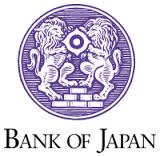Week in Review
One of the pivotal events of last week occurred on Wednesday when the US Federal Reserve surprised investors by producing a more upbeat and hawkish policy announcement than expected. Specifically, the Fed expressed solid confidence in the US economic recovery by completing terminating its six year-old quantitative easing program, which was originally implemented to counter the 2007/08 financial crisis. The Central Bank also re-iterated that it intended to retain its benchmark interest rate at historic lows for a considerable time. The Fed further advised that the timing of its first rate hike was heavily dependent on the quality of future economic releases. The stock markets and the US Dollar rallied strongly in response to these remarks.
In direct contrast, the Bank of Japan completely surprised investors last Friday by expanding its own stimulus programs. News emerged disclosing that the board of the Japanese Central Bank had voted 5 to 4 in favor of tripling the purchases of property-based investment and exchanged-linked trusts. In addition, the BoJ revealed its intentions to hasten its purchases of national government bonds.
Simultaneously, a leading Japanese Investment and Pension fund emphatically stated that it would dramatically enhance its current $1.2 trillion portfolio. This major financial institution also disclosed plans to boost both its foreign and domestic stocks to 25% from their present 12% levels. Prominent analysts summarized these developments by stating that the Japanese economy should receive a sizeable boost by the instigation of not just the BoJ new monetary easing policies but also from the actions of this key pension fund. Global stock indices and the US Dollar reacted positively to these events by once again rocketing higher. The USA added to the party mood by confirming that national wages had risen during the third quarter by their fastest pace in nearly six years.
What to Expect This Week
A series of major global economic indicators will be published during this week.
China will launch the new week by declaring its final PMIs for October. A result below 50 could exert pressure on currencies, such as the AUD and NZD. Next, the Eurozone will present its final PMIs for this month. A poor figure could initiate talks about euro devaluation. Great Britain will then post its final PMIs for October which are expected to extend their recent impressive showings.
On Tuesday, Australia will issue its Retail Sales for September which is forecasted to rebound to 0.3% from its prior dismal reading of 0.1%. The Reserve Bank of Australia will subsequently announce its interest rate decision and latest policies decisions. This central bank is not predicted to reveal any surprises although global inflationary remarks could drive the national currency lower. Later in the session, New Zealand will release its unemployment rate and employment change parameters for the third quarter. The former indicator should decline from 5.6% to 5.5% while the later should increase form 0.4% to 0.6%.
Haruhiko Kuroda, the Governor of the Bank of Japan is scheduled to deliver a speech on Wednesday. Analysts are hoping the he will provide deeper insights into why the BoJ unexpectedly implemented new stimulus measures last Friday. The USA will then publish a labor report disclosing how many jobs were created within the private sector last month. Expect consensus is favoring another 200+ figure. Later, the USA will also announce its non-manufacturing PMI for October which could generate additional confidence in the national economy if a strong print is verified.
Australia will kick-off Thursday by stating its unemployment and employment change for October. This event may be lackluster because of the poor and dubious quality of recent releases. The Bank of England will then disclose its latest monetary easing policies. No serious changes or enhancements are expected since the British economy appears to be on the correct track at present. The European Central Bank will subsequently deliver its interest rate and policy decisions accompanied by a press conference. After trimming interest rates and instigating new stimulus measures in recent months, no new action is expected this time around.
On Friday, Canada will issue its Unemployment Rate and Employment Change for last month. Analysts are predicting that only 0.4K new jobs would have been created following the previous month’s stellar performance. The blue ribbon event of the week will then occur when the USA posts its Non-Farm Payroll figure and Unemployment Rate for October. Employers are predicted to have created about 230k new jobs while the Unemployment rate should remain steady.



